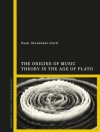– An approach based on self-learning and recognition of rhythmic and melodic patterns
– Original tunes rather than abstract sight-reading exercises
– 237 carefully graded pieces in a range of musical styles
– Nine sections ranging from open strings to extensions and slurs
– Each section concludes with a set of duets and accompanied pieces for practice of ensemble sight-reading
– Tunes progress to all key signatures up to four sharps and three flats
– Preliminary towards grade 4
Inhoudsopgave
Preface – To the pupil: why sight-reading? – Section 1: Open strings – Section 2: Open strings and 1st finger – Section 3: 3rd-finger notes, key signatures and rests – Section 4: 4th-finger notes, quavers and the 4/4 time signature – Section 5: 2nd-finger notes, accidentals and slurs – Section 6: Ties, dotted notes, bow markings and the anacrusis – Section 7: Forward extensions and semiquavers – Section 8: The flattened 1st finger – Section 9: 3/8 and compound time – Glossary
Over de auteur
John Kember studied at Trinity College of Music, London and has enjoyed a varied career in both performing and academic spheres, ranging from teaching in schools and privately, to working as composer, arranger, pianist and conductor in Concert Halls, theatres and recording studios. Currently John is working on a number of new and exciting projects for both publication and performance. He has a busy private teaching practice in south east London and teaches for Kent Music School and the Kent Centre for Young Instrumentalists in Maidstone. John was an examiner for the Associated Board of the Royal Schools of Music from 1989 until 2005












